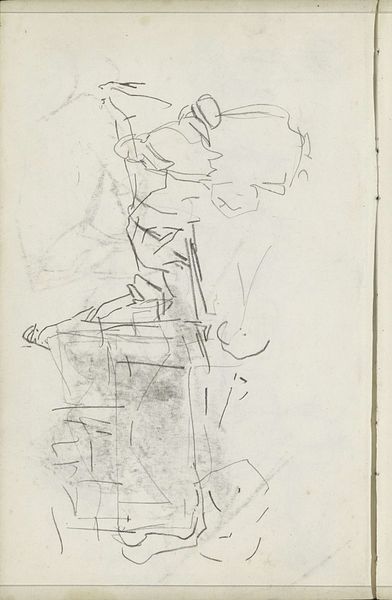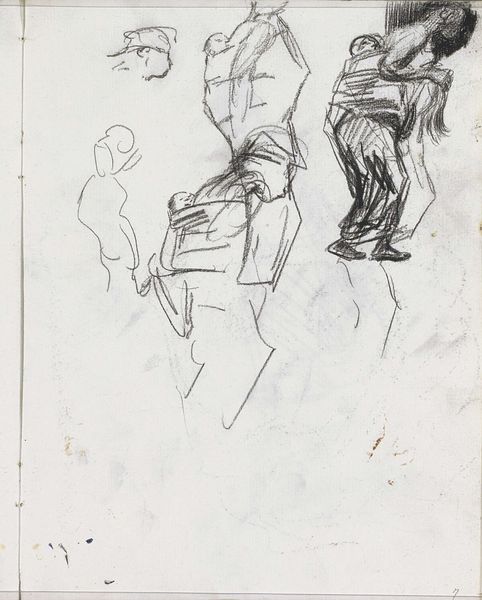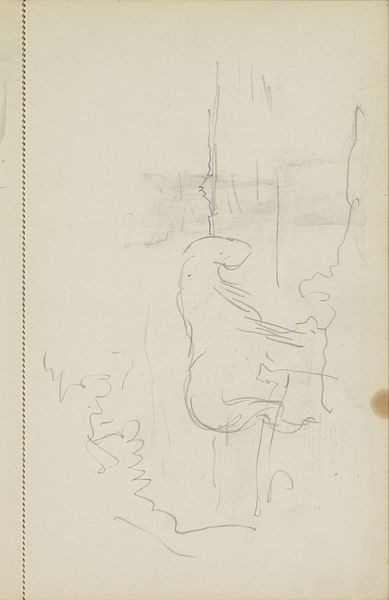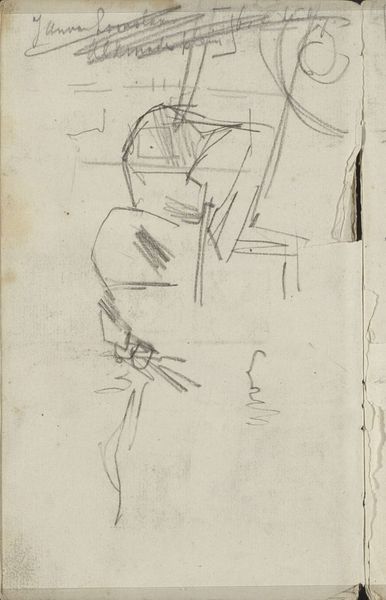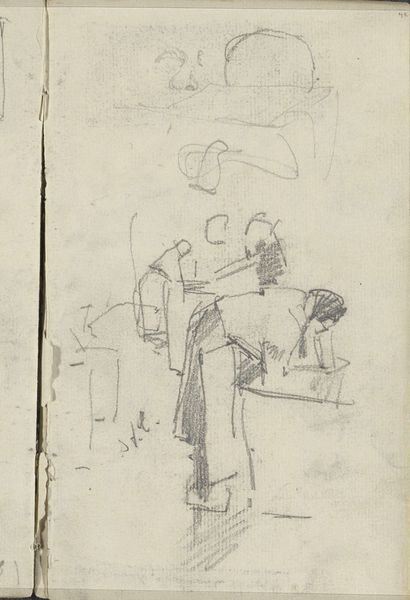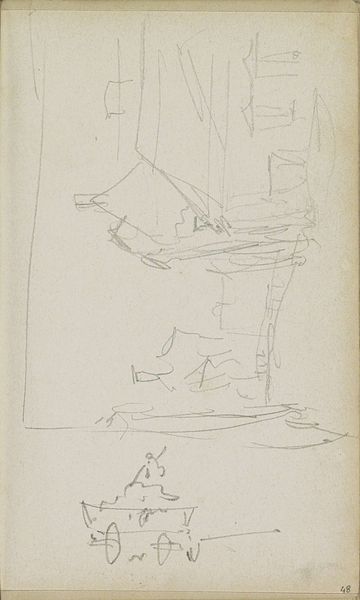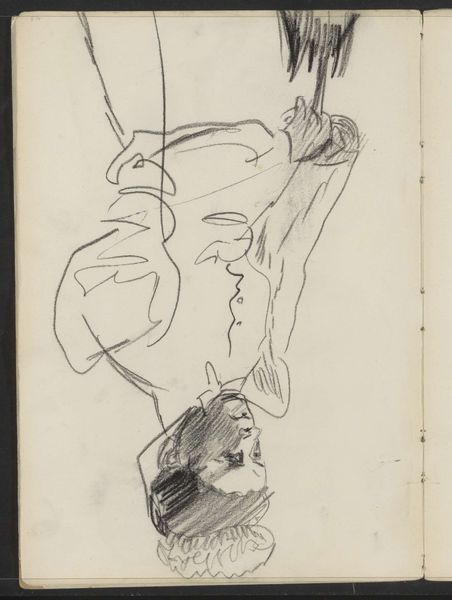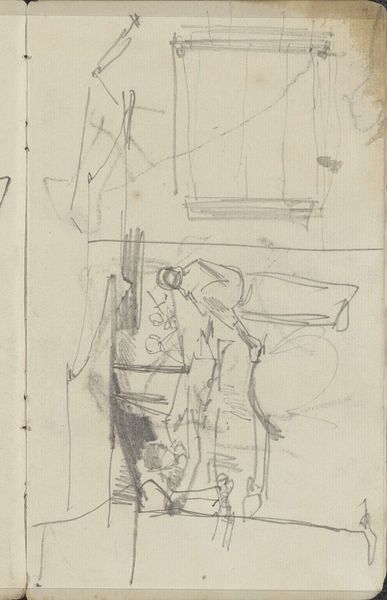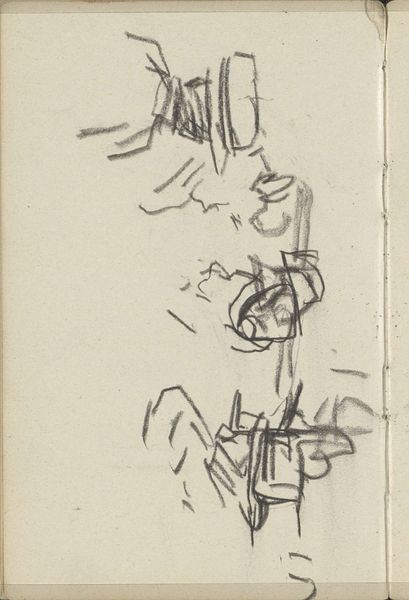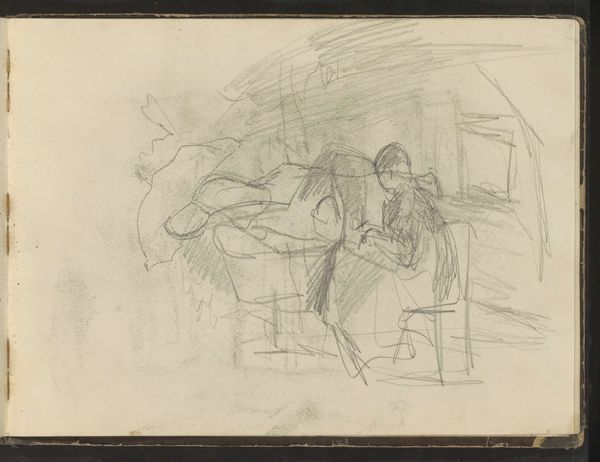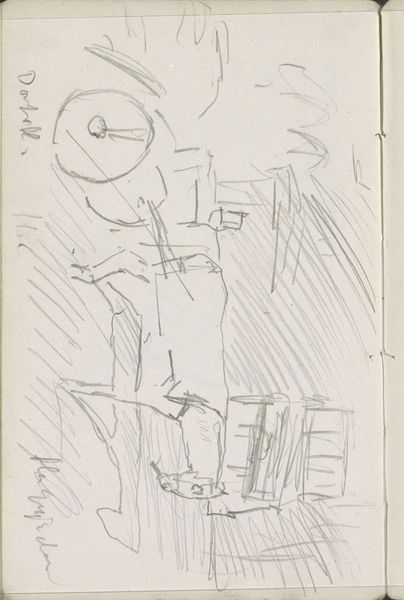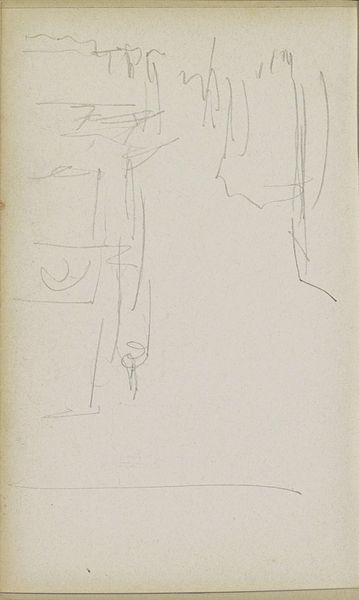
Copyright: Rijks Museum: Open Domain
Curator: This sketch is entitled "Drummer before a seated man" by Isaac Israels, made sometime between 1875 and 1934. You can find it here at the Rijksmuseum. What strikes you first? Editor: It’s...unfinished, obviously, but it feels immediate. Almost like looking over the artist’s shoulder while he’s trying to capture a fleeting moment. Like a snapshot from a dream, slightly out of focus. Curator: Absolutely. Israels’s skillful use of light pencil work to give us an impression of reality while foregoing complete, refined images contributes to the work’s open structure. It encourages interpretation. The lines don’t confine; they suggest. Editor: The arrangement is interesting, too. It’s not quite a balanced composition, but it feels intentional, maybe even confrontational. What does it say about their relationship, how they are placed in the sketch? Curator: Perhaps Israels was experimenting with visual dynamics—examining dominance through the higher position of the seated man. Notice how the drummer is slightly obscured, while the seated figure is clearly defined, asserting control through his visual presence and position. Or maybe he just saw them and rapidly took to his sketchbook. Editor: I love the casual feel. There is something so freeing about witnessing such loose, unconstrained strokes, seeing how lines and shadows hint at volume and presence with minimal effort. Curator: Its simplicity reveals the sheer potential of line. A perfect demonstration that less can, indeed, be more—turning a spontaneous vision into something tangible and thought-provoking, regardless of being unfinished or part of some other artistic endeavour. Editor: This drawing makes me wonder about the stories and movements that escape finalization, and still enrich our understanding. Thanks for sharing this intimate moment with us, and to Issac Issraels.
Comments
No comments
Be the first to comment and join the conversation on the ultimate creative platform.
